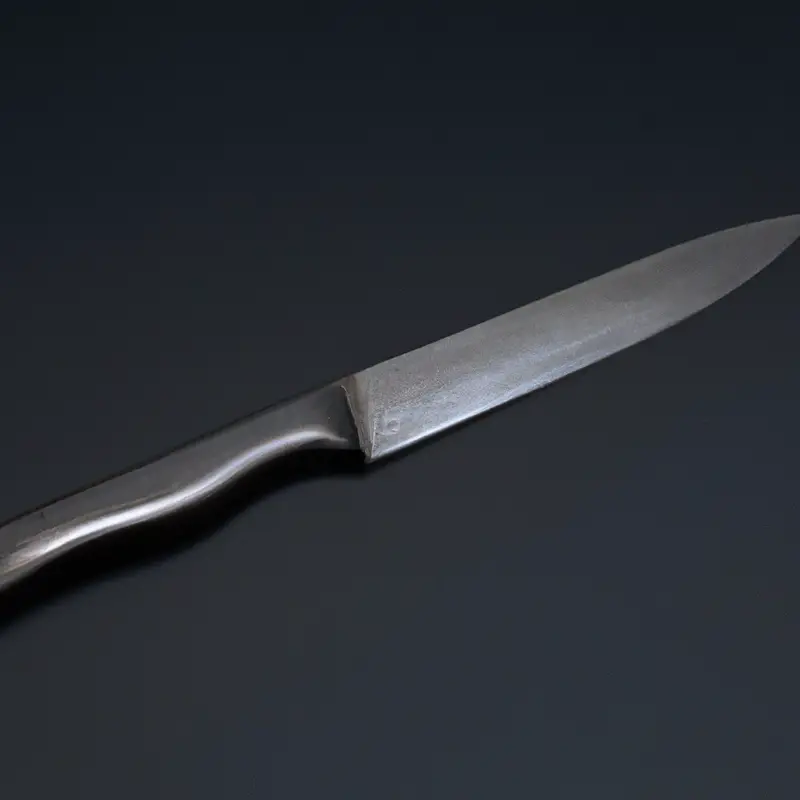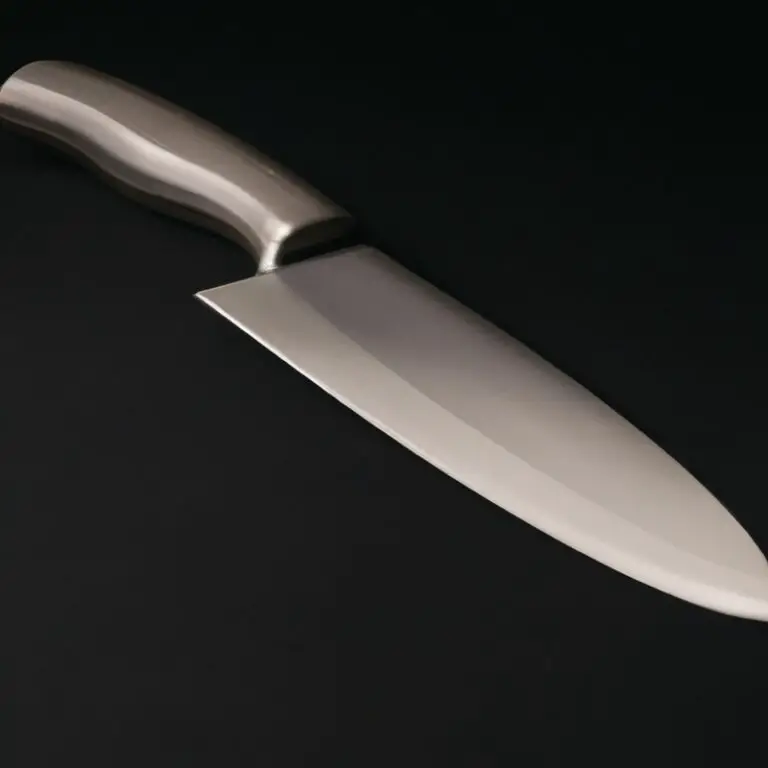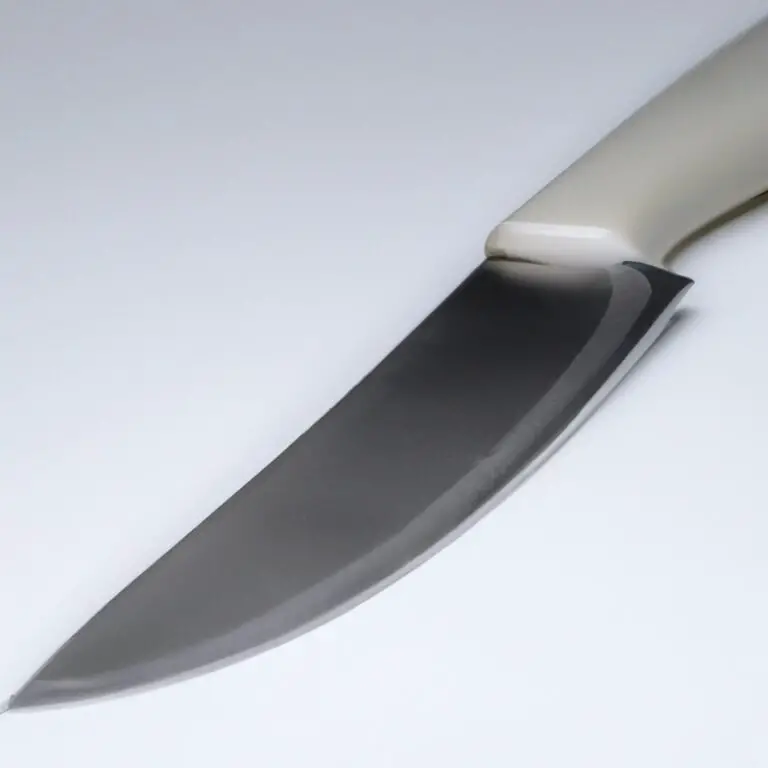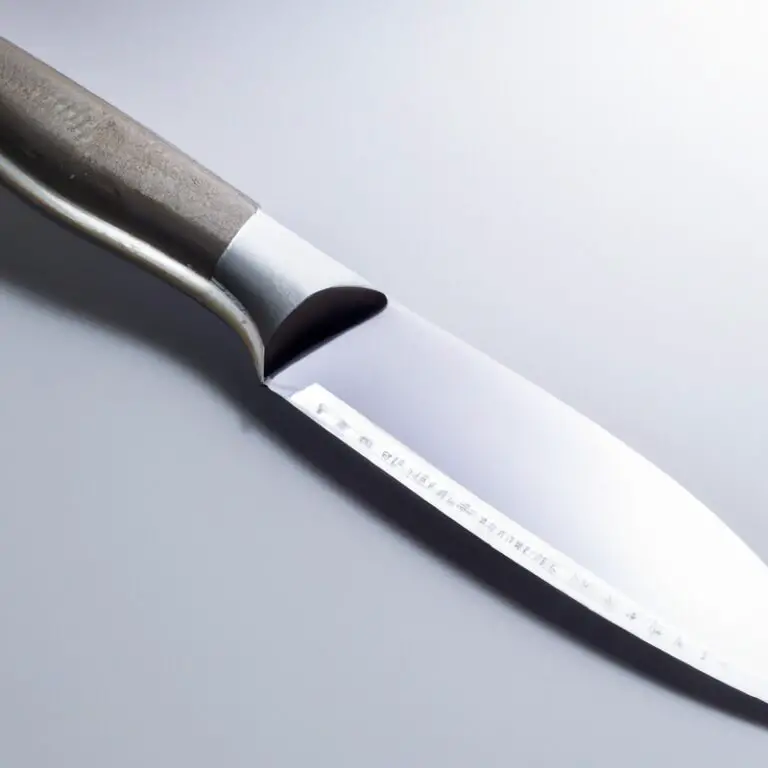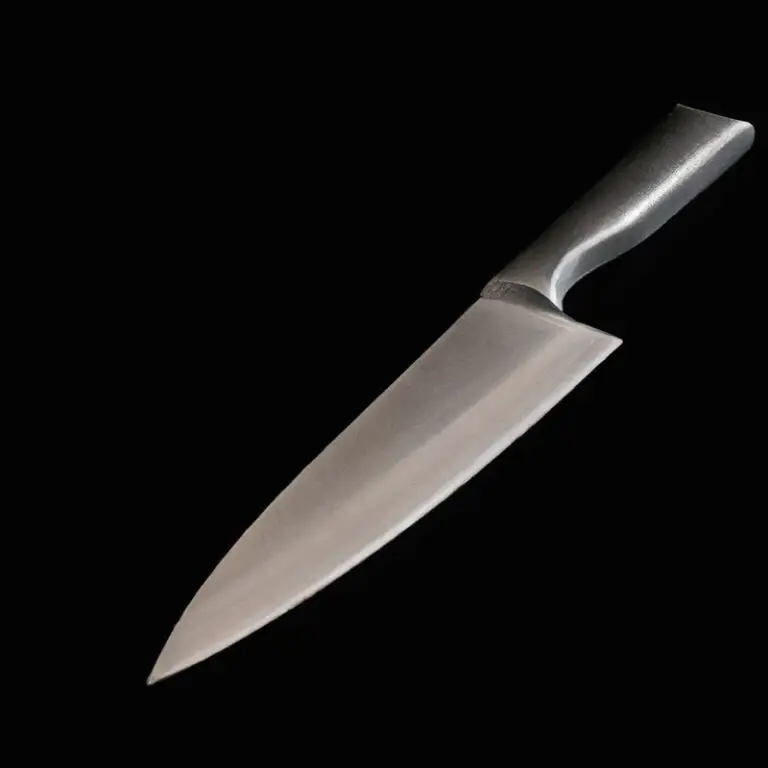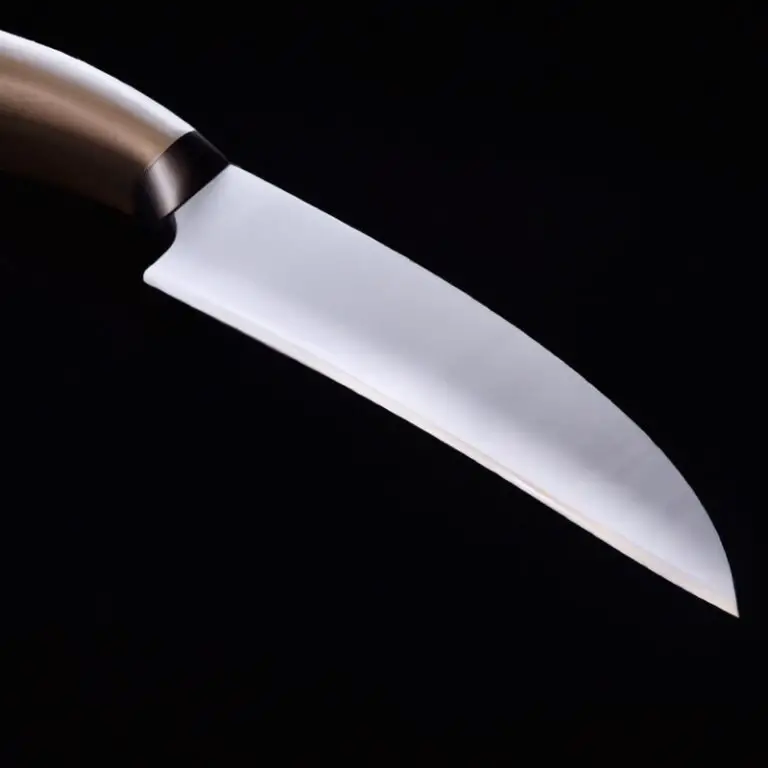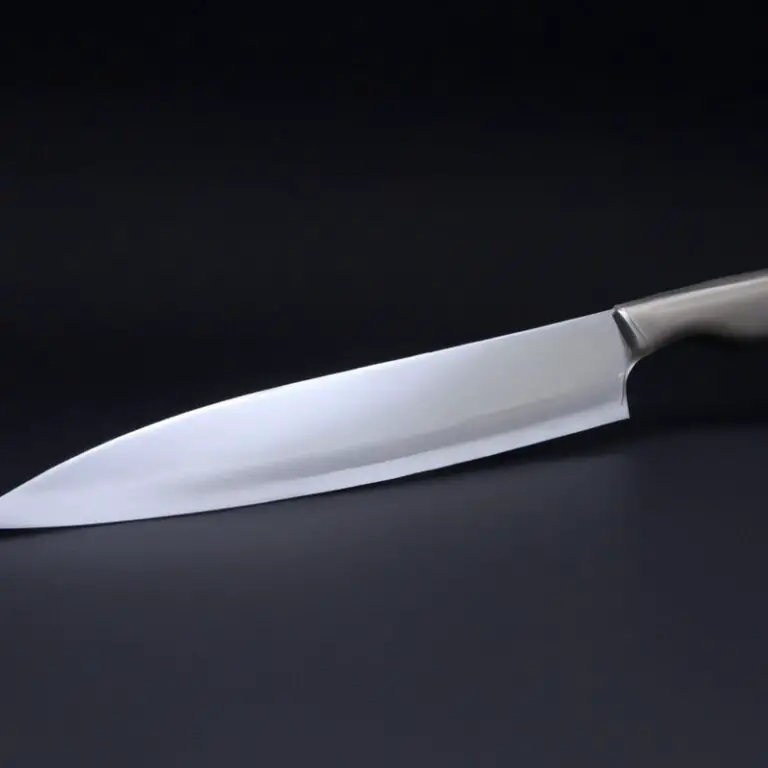How To Slice Bell Peppers With a Santoku Knife? Easy!
Key Takeaways:
- A Santoku knife is the perfect tool for slicing bell peppers, offering a sharp blade and comfortable grip to ensure a smooth and easy cutting process.
- To slice a bell pepper with a Santoku knife, start by cutting off the stem and top of the pepper before slicing it in half and removing the seeds and membranes.
- When using a Santoku knife to slice bell peppers, be sure to use a rocking motion to create even, thin slices without crushing the pepper.
- With its versatile design and high-quality construction, a Santoku knife is a must-have tool for any home cook looking to improve their slicing and dicing skills in the kitchen.
Do you struggle with slicing bell peppers evenly and beautifully? Have you considered using a Santoku knife?
With its unique design, a Santoku knife can make slicing bell peppers a breeze.
In this article, I’ll be sharing my personal experience and expertise on the benefits of using a Santoku knife, how to select the right one, proper grip and technique, and maintaining it for optimum performance. You’ll also learn tips to avoid injury and achieve consistent, uniform, and creative bell pepper slices.
Join me on this journey to elevate your culinary skills and impress your guests with stunning bell pepper cuts!
| Santoku Knife Slicing Steps |
|---|
| 1. Cut off the top of the bell pepper. 2. Remove the seeds and white pith from the inside of the pepper. 3. Lay the pepper on a cutting board, flat side down. 4. Grip the handle of the Santoku knife with your dominant hand and the tip of the blade pointing towards the bell pepper. 5. Hold the top of the pepper with the other hand and slice down vertically to remove the flesh from the pepper. 6. Continue cutting down until you reach the bottom of the pepper. 7. Slice the pepper into desired thickness, either lengthwise or crosswise. 8. Repeat with remaining bell peppers. |
Benefits of using a Santoku knife for slicing bell peppers
Using a Santoku knife for slicing bell peppers provides several benefits. The design of the Santoku knife’s blade allows for a clean and precise cut, ensuring that the pepper’s flesh remains intact while its skin is neatly sliced off.
The knife’s flat blade also makes it easier to slice through the pepper’s wide surface area.
Furthermore, the knife’s balance and ergonomic handle promote a comfortable grip and reduce the likelihood of hand fatigue. By using a Santoku knife, you can achieve consistent and uniform slices, which is essential for cooking and food presentation purposes.
Finally, a Santoku knife is versatile and can be used for a range of cutting tasks, making it a valuable addition to any kitchen.
Understanding the anatomy of a bell pepper before slicing with a Santoku knife
Before slicing a bell pepper with a Santoku knife, it is essential to understand the pepper’s anatomy. Bell peppers have two essential parts: the flesh and the seeds.
The flesh is the edible part and varies in thickness, depending on the pepper’s stage of maturity.
The seeds are located in the core of the pepper, which runs from the stem to the bottom. When preparing to slice a bell pepper, the first step is to cut off the stem and discard it.
Next, cut off the base of the pepper, revealing the core containing seeds.
To remove the core, either slice around it or cut it into manageable pieces that can later be discarded. It is also important to note that bell peppers have ribs, which are the white, fleshy parts that run vertically from top to bottom on the inside of the pepper.
When slicing bell peppers with a Santoku knife, you can either choose to cut along or across the ribs.
Cris-crossing the ribs in a bell pepper will give it a unique texture and visually appealing look. Understanding the anatomy of a bell pepper before slicing with a Santoku knife will ensure that you slice it correctly and achieve uniform pieces.
Moreover, it avoids unnecessary waste and provides consistency in the dishes.
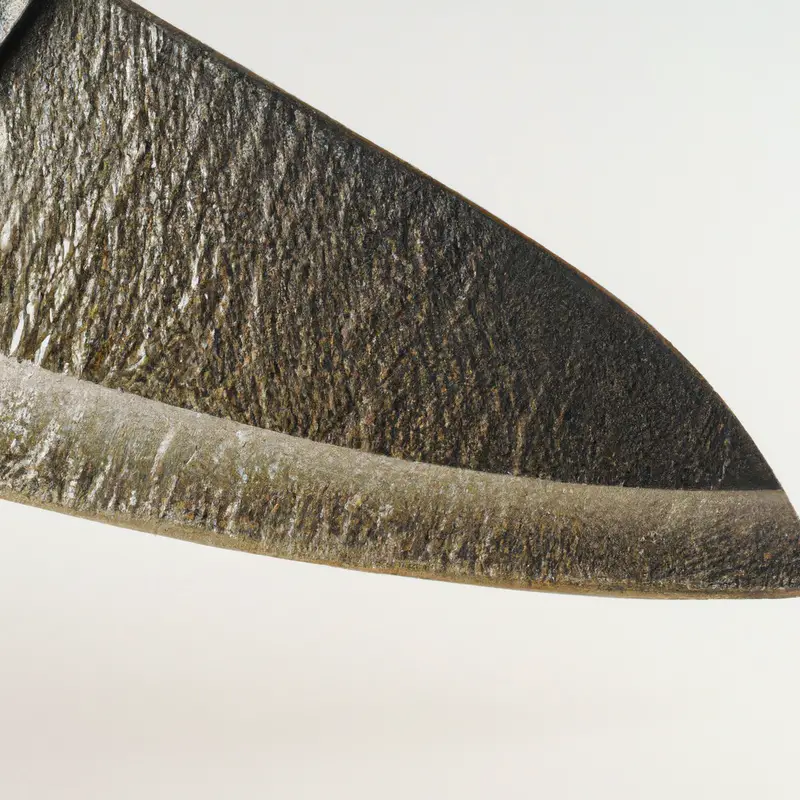
Choosing the right Santoku knife for bell pepper slicing
Choosing the right Santoku knife for slicing bell peppers is important to ensure effortless and precise cuts. When selecting a Santoku knife, consider the blade length, handle grip, and overall weight.
Ideally, a Santoku knife with a blade length of 5-7 inches, a comfortable handle grip, and a lightweight design is suitable for bell pepper slicing.
Additionally, look for a Santoku knife with a sharp, straight-edge blade, as this will result in clean cuts and minimize damage to the bell pepper’s skin. Investing in a high-quality Santoku knife will not only make your slicing experience more comfortable but also increase the longevity of your knife.
Proper grip and technique for slicing bell peppers with a Santoku knife
Proper grip and technique are crucial when slicing bell peppers with a Santoku knife. Here are the steps to follow:
- Hold the handle with your dominant hand and place your index finger on the spine of the knife. This will give you better control.
- Hold the bell pepper with your non-dominant hand and rest it on a cutting board.
- Slice off the top and bottom of the bell pepper with the tip of the Santoku knife.
- Cut the sides of the bell pepper by following the contour of the pepper with a sawing motion. Keep your fingers curled inwards to avoid cutting yourself.
- Use a rocking motion to finely dice the bell pepper.
By following these steps, you’ll be able to slice bell peppers with ease and precision. Remember to always use caution and keep your fingers away from the blade to avoid injury.
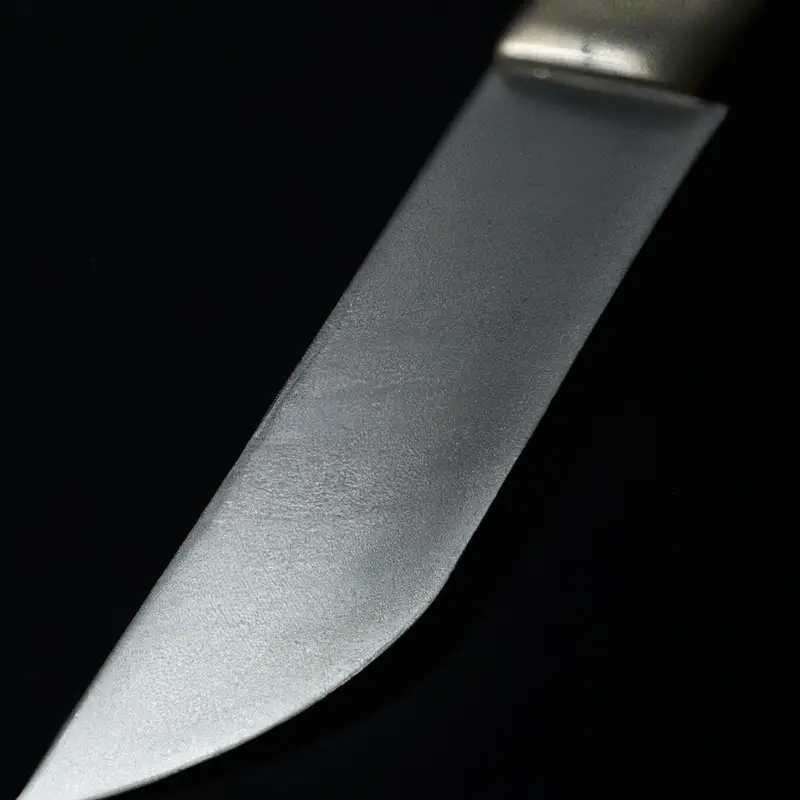
How to maintain your Santoku knife for optimum performance while slicing bell peppers
To maintain your Santoku knife for optimum performance while slicing bell peppers, it is important to keep it sharp and clean. Use a honing rod to maintain the knife’s sharpness, and sharpen it regularly with a sharpening stone or a professional sharpener.
Clean the blade with soap and water, and dry it immediately after washing to prevent rusting.
Store your Santoku knife in a knife block or sheath to prevent accidental damage and keep it away from moisture. Avoid putting it in the dishwasher or leaving it in the sink for prolonged periods.
A well-maintained Santoku knife will ensure clean and precise cuts when slicing bell peppers, and minimize the risk of accidents.
Tips to avoid injury while using a Santoku knife to slice bell peppers
To avoid injury while using a Santoku knife to slice bell peppers, follow these tips:
- Always cut away from your body and keep your fingers curled under the hand holding the pepper.
- Make sure your cutting surface is stable and won’t slip while cutting.
- Use a sharp Santoku knife to prevent slipping and reduce the amount of force needed to cut through the pepper.
- Keep the blade low and slice through the pepper in a smooth, fluid motion, using a sawing action if necessary.
- Avoid rushing or distractions while cutting, as this can increase the risk of injury.
By following these tips, you can enjoy safe and injury-free bell pepper slicing with your Santoku knife.
Achieving consistent and uniform bell pepper slices using a Santoku knife
Achieving consistent and uniform bell pepper slices using a Santoku knife requires a few simple steps. First, ensure that the blade is sharp to prevent crushing the pepper and uneven slices.
Use a stable cutting board and apply a firm grip on the handle while sliding the blade through the pepper.
Cut the top and bottom off the pepper and slice the pepper lengthwise into halves. Then, cut each half lengthwise into strips, and finally, cut the strips crosswise into uniform pieces.
With the Santoku knife’s wide blade and sharp edge, you can quickly and effortlessly achieve consistent and uniform bell pepper slices for your recipes.
Creating creative and visually appealing bell pepper cuts using a Santoku knife
Creating creative and visually appealing bell pepper cuts using a Santoku knife is all about utilizing the knife’s versatile capabilities. Some popular techniques for impressive bell pepper cuts include Julienne, which involves cutting the bell pepper into thin, matchstick-like pieces, and Brunoise, which produces tiny, uniform cubes by first creating Julienne cuts and then dicing them into small squares.
Another technique is to use the Santoku knife to create interesting designs on the surface of the bell pepper.
For example, by making V-shaped cuts around the stem, you can create a beautiful floral design or by slicing the bell pepper into thin rounds and then using a small cookie cutter to make intricate shapes inside each round. Remember to experiment with different cuts to discover new ways to enhance the presentation of your dishes.
With a sharp Santoku knife and a bit of creativity, the possibilities are endless.
The differences between a Santoku knife and other commonly used kitchen knives for slicing bell peppers
The Santoku knife has a shorter and wider blade than most kitchen knives. This makes it easier to slice through bell peppers, as it creates less friction.
The blade shape also allows for a rocking motion while cutting, rather than a straight up and down motion, which can be harder on the hands.
Additionally, the Santoku knife’s sharp edge allows for a clean and precise cut, resulting in more uniform slices. Other commonly used kitchen knives, such as chef’s knives or utility knives, may also work for slicing bell peppers, but they may require more effort and skill to achieve the same results.
Ultimately, the choice of knife will depend on personal preference and comfort level.
Final Verdict
Using a Santoku knife to slice bell peppers has proven, time and time again, to be a game-changer in the kitchen. Understanding the anatomy of the bell pepper, choosing the right Santoku knife, maintaining it properly, and using the correct grip and technique are all essential in achieving the perfect slice.
Remember to prioritize safety by following the tips we’ve provided to avoid injury.
By using a Santoku knife, you will achieve consistent and visually appealing bell pepper slices every time. So don’t hesitate to add this knife to your collection and take your cooking skills to the next level.
Trust us, your taste buds (and your dinner guests) will thank you.

